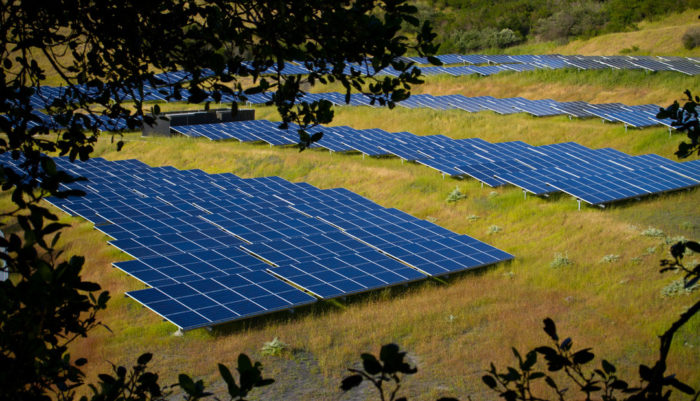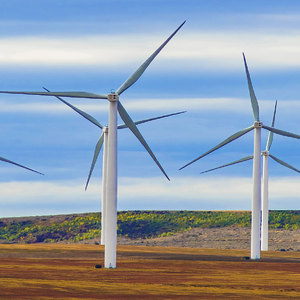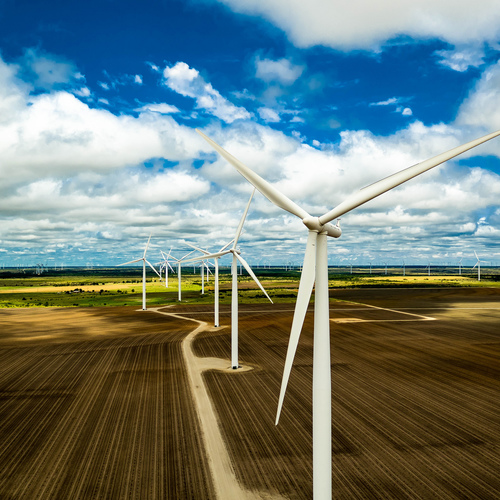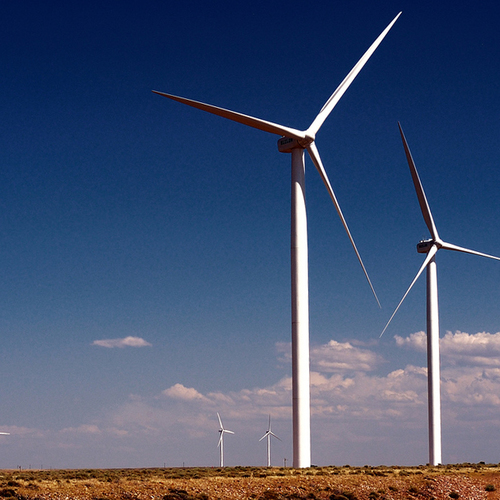
Image Credit: Michael Mees via Flickr
The tax overhaul passed this week by Congress leaves tax breaks for solar and utility-scale wind projects in place, but does not restore tax credits for ground-source heat pumps and small wind turbines as those two “orphan technologies” had hoped.
The Associated Press reports that the $1.5 trillion package does nothing to change tax credits for the wind and solar industries. Under terms of a bill passed in 2015, the incentives for utility-scale wind run through 2020 and solar benefits until 2022.
The bill also includes a tax credit of up to $7,500 for plug-in vehicles, despite earlier attempts in the House to kill it. (If you’re interested in wading through the 560 pages of the bill, you can find it here.)
Of key importance to homeowners is survival of the 30% federal Investment Tax Credit (ITC) for photovoltaic (PV) systems and solar hot water systems. The ITC will drop to 26% in 2020 and 22% in 2021. After that, the residential credit drops to zero while the commercial and utility credit goes to 10% permanently, according to the Solar Energy Industries Association.
While the solar industry benefits, the bill does nothing to restore tax credits that would have helped manufacturers of small wind turbines and ground-source heat pumps — a bitter pill for both of those industries.
One reason that existing solar and wind incentives will continue, according to The New York Times, is the rising influence of the renewables industry, even among Republicans. Charles Grassley of Iowa and Dean Heller of Nevada, for example, both objected to the rollback of incentives in the House bill. Grassley may not be convinced that global warming is a problem, but Iowa gets more than one-third of its electricity from wind turbines. Heller’s home state is where Tesla is building a giant factory to make batteries for its electric vehicles.
Wind and solar together accounted for about 6.5% of all U.S. electricity in 2016, according to the U.S. Energy Information Administration.
“As wind and solar projects have soared in the U.S., in both red and blue states, so has the industry’s influence in Washington, D.C., on both sides of the aisle,” Dan W. Reicher, director of the Center for Energy Policy and Finance at Stanford, told The Times.
Expired tax credits lower sales
Until the end of 2016, consumers could take advantage of federal tax credits for energy-related improvements made to their primary homes, including heating and cooling equipment, water heaters, windows, and insulation. Those benefits have expired.
Ground-source heat pumps (also called geothermal systems) had been eligible for the 30% credit, and the industry experienced a sharp decline in sales after it expired. Manufacturers were encouraged by an early version of the tax bill in the House of Representatives, which restored the credit and made it retroactive to the beginning of 2017. But in the end, the provision was not included.
“It was a kick in the pants,” said Ryan Dougherty, the chief operating officer of Geo Exchange, the trade group representing the ground-source heat pump industry in the U.S.
Along with other “orphan technologies” like fuel cells and small wind, the industry has been left behind, despite what Dougherty said was support from a “broad coalition” of Democrats and Republicans in Congress.
The 30% tax credit was especially useful for heat pump manufacturers because it made the relatively expensive systems competitive with other HVAC options, Dougherty said by phone. When the credits were no longer available, sales fell by as much as 50%. Allowing tax credits to expire amounted to the government telling consumers the “technology is not worth your money,” he said. “It’s leaving the little guys behind. Our industry is the little guys.”
Mike Bergey, president and CEO of Bergey Wind Power, a manufacturer of small wind turbines, expressed similar views. The loss of tax incentives was “pretty devastating,” he said in a call, and “completely killed” the company’s residential market. Loss of sales persuaded many of Bergey’s mom-and-pop distributors to begin selling PV modules instead of wind turbines, and rebuilding the retail network won’t be easy.
Bergey found the disparity between continued tax credits for PV modules that are largely made overseas and the lack of any credit for residential wind turbine buyers in the U.S. disturbing. “It’s just not a good narrative,” he said.
A sliver of good news for the small wind industry, however, is a continuing tax credit for small commercial customers, such as ranches and farms. That credit is 24% this year and will drop by 6 points per year until it’s gone. That appears to be untouched in the new tax bill.
Still a ‘glimmer of hope’
Dougherty sees a “glimmer of hope” in a House bill sponsored by Tom Reed, a New York Republican, that would restore tax credits for geothermal and small wind systems. But, Dougherty said, Congress is unlikely to consider stand-alone bills — that is, bills with a single purpose rather than proposals that become part of omnibus legislation — and the chance of passage at the moment looks “slim to none.”
“It’s not that heavy a lift,” he said of the bill’s $2.3 billion price tag over five years. “It won’t break the bank.”
But the situation appears fluid. Dougherty and Bergey were hoping to get language to restore the credits into an “extender bill” for the federal budget that could be considered in January. Bergey said he understands there’s interest in that approach, and its chance of approval could be as high as 60%.
“These are tough times,” he said. “We’ve seen tough times before. We’ll come out of this OK.”
Some concerns remain
One sour note for environmentalists is the provision that will open the Arctic National Wildlife Refuge in Alaska to oil drilling. Alaska Sen. Lisa Murkowski and other Republicans have been pressing for the change for years and argue it can be done without harming the 19.6 million-acre refuge, what has been described as one of the most pristine regions in the U.S. Democrats have fought the move.
Another sticking point for renewable energy advocates was the Base Erosion Anti-Abuse Tax (BEAT), a provision designed to prevent big corporations from moving their profits overseas to avoid federal taxes.
The American Council on Renewable Energy had warned in November that BEAT would have “a devastating if unintended impact” on the solar and wind industries by undermining the use of renewable energy tax credits to pay for new projects.
The final version of the bill, Greentech Media said, lets corporations continue using the Investment Tax Credit and the Production Tax Credit to lower taxable income, although at a lower rates.
BEAT is not something, however, that residential renewable energy customers are going to spend much time worrying about. (For a detailed explainer on how BEAT works, read this.)
Weekly Newsletter
Get building science and energy efficiency advice, plus special offers, in your inbox.















One Comment
solar tax credits
they pretty much had to keep the solar tax credit in there after ITC ruling allows a possible duties increase on imported pv panels. Eliminating the tax credit and increasing the import duties would essentially kill the entire industry.
Log in or create an account to post a comment.
Sign up Log in